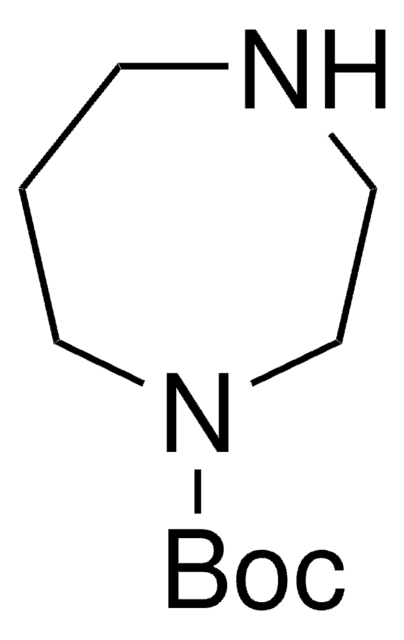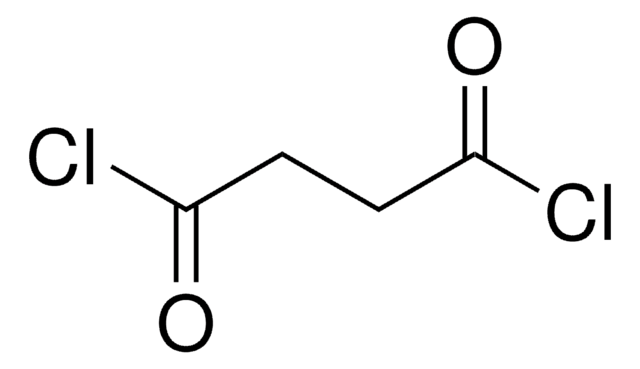O8801
Oxalyl chloride
reagent grade, 98%
Sinonimo/i:
Ethanedioyl dichloride
About This Item
Prodotti consigliati
Grado
reagent grade
Livello qualitativo
Densità del vapore
4.4 (vs air)
Tensione di vapore
150 mmHg ( 20 °C)
Saggio
98%
Impiego in reazioni chimiche
reagent type: oxidant
Impurezze
≤1.0% phosgene content
Indice di rifrazione
n20/D 1.429 (lit.)
P. ebollizione
62-65 °C (lit.)
Punto di fusione
−10-−8 °C (lit.)
Densità
1.5 g/mL at 20 °C (lit.)
Stringa SMILE
ClC(=O)C(Cl)=O
InChI
1S/C2Cl2O2/c3-1(5)2(4)6
CTSLXHKWHWQRSH-UHFFFAOYSA-N
Cerchi prodotti simili? Visita Guida al confronto tra prodotti
Categorie correlate
Descrizione generale
Applicazioni
- To synthesize β, β′-diketodithioethers from β, β′-dihydroxydithioethers via Swern oxidation.
- In the DMSO-catalyzed Swern oxidation of primary amides or aldoximes to nitriles in the presence of triethylamine as a base.
- In the Moffatt-Swern oxidation of aryl allylic alcohols to halogenated unsaturated ketones in the presence of triethylamine.
- Synthesis of N-heterocyclic ynones and ynediones, used to activate carboxylic acids
- Chlorination and halogenation
- Three-component [3+2] cycloadditions
- Reactions with organostannanes
- Synthesis of cyclopentenones
- Carbonylations, used as a carbonyl synthon
Avvertenze
Danger
Indicazioni di pericolo
Classi di pericolo
Acute Tox. 3 Inhalation - Acute Tox. 3 Oral - Eye Dam. 1 - Skin Corr. 1B - Water-react 1
Rischi supp
Codice della classe di stoccaggio
4.3 - Hazardous materials which set free flammable gases upon contact with water
Classe di pericolosità dell'acqua (WGK)
WGK 2
Punto d’infiammabilità (°F)
Not applicable
Punto d’infiammabilità (°C)
Not applicable
Dispositivi di protezione individuale
Faceshields, Gloves, Goggles
Scegli una delle versioni più recenti:
Possiedi già questo prodotto?
I documenti relativi ai prodotti acquistati recentemente sono disponibili nell’Archivio dei documenti.
I clienti hanno visto anche
Il team dei nostri ricercatori vanta grande esperienza in tutte le aree della ricerca quali Life Science, scienza dei materiali, sintesi chimica, cromatografia, discipline analitiche, ecc..
Contatta l'Assistenza Tecnica.











